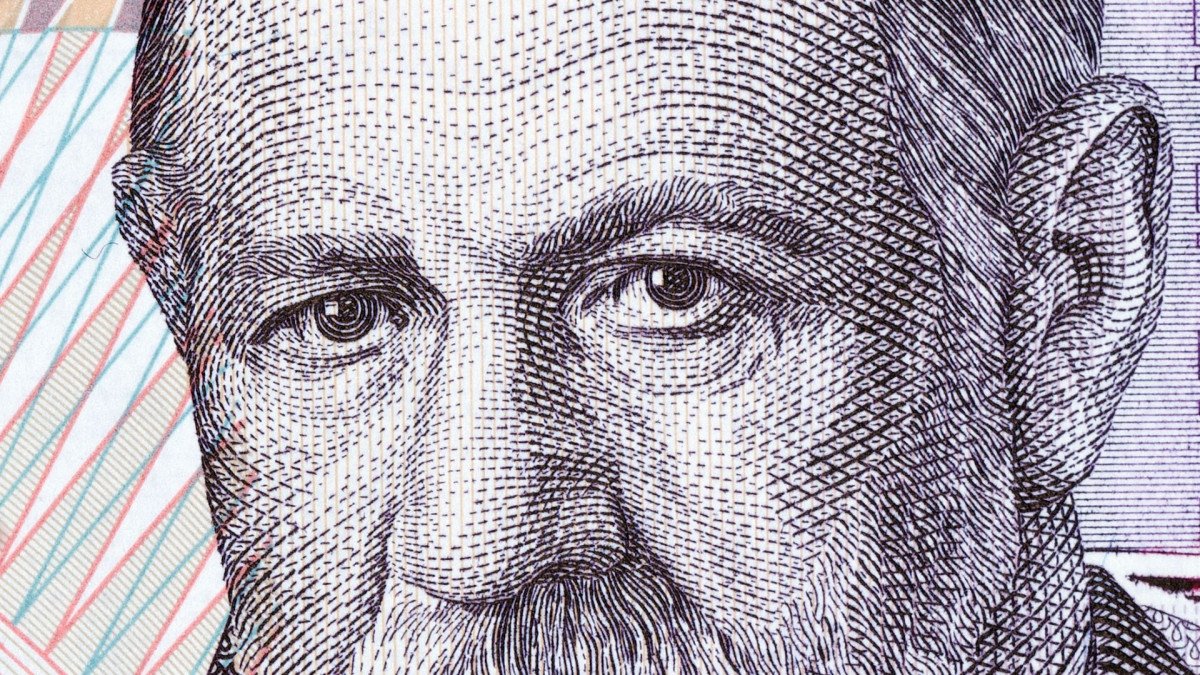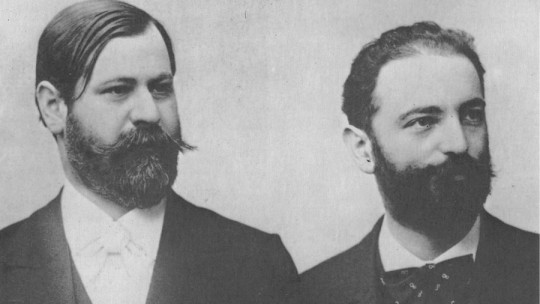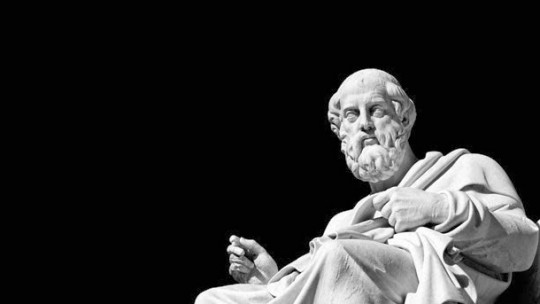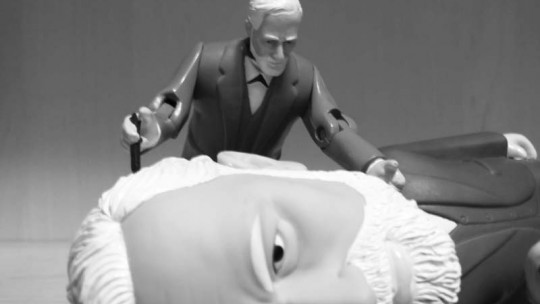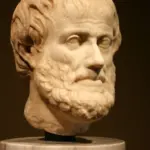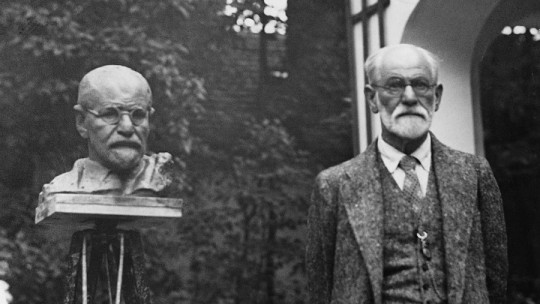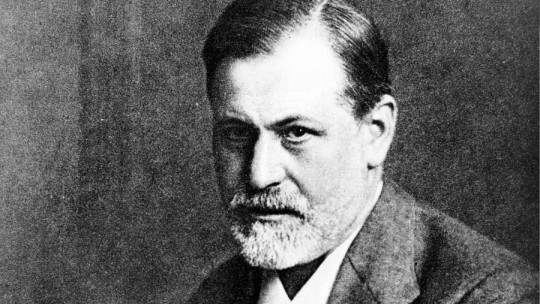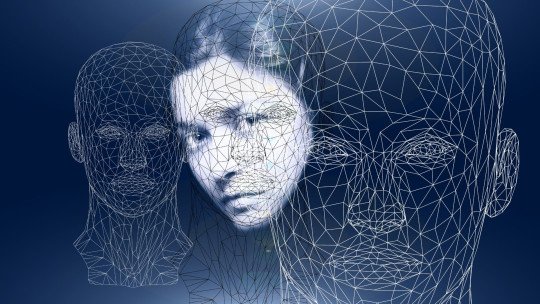
History taught in academies tells us that the course of human events experienced a rather astonishing acceleration around a period later called the Renaissance. According to what is accepted and disseminated today, European nations underwent a movement of vast cultural and material transformation that led them to expand, discover, explore, conquer, dominate, exploit, colonize and map the world.
It is impossible to give here an idea, even in broad strokes, of the richness, complexity and scope of the upheavals that occurred in the space of a few centuries in the areas of culture, the arts, social relations, the economy, technology and religion, to name just a few. Let us just highlight the fact that European culture, in its movement towards itself and towards the world, has given birth to two objects that deserve our attention. That thing called science in the 17th century; and that other thing, a little later, called psychoanalysis
Big History and psychoanalysis
All the actors in this globalization, whether travelers, explorers, conquerors, merchants, discoverers or dreamers, participated in their own way in the collective movement of great History. Whether they worked on doing or knowing, each one, depending on their psychic organization, had the possibility of living the adventure in an eminently differentiated and personal way
Each era offers its subjects outlets for their drives and it would be fun to ask what role any of the drives enunciated by Freud may have had in any specific activity linked to historical events. It seems quite obvious, for example, that the uncontrollable thirst for gold of the first Spanish conquistadors had something to do with unbridled oral greed.
Sadism will have found in this same environment a playing field quite conducive to expressing itself without inhibitions. But how to think about slightly more complex problems, such as the evangelizing passion of the founders of missions, the Jesuits of Paraguay or the Franciscans of the Mexican Sierra Gorda? This specific example is about a construction, about doing something, that has resonances in the dimensions of architecture, community life and spirituality.
It is a realization that must be understood as an expression of the anal drive, although other components are integrated into it. We can multiply this “little game of drives” at will, play it in a group and ask ourselves to which drive we should attribute each historical work. The little game has the character of a somewhat idle entertainment as long as the other is not taken into account.
And in fact, the other, otherness, has taken a long time to be taken into account in this History that we are told and on which we have fed. Genocide and slavery constitute a rather brutal approach to the problem of otherness And although many voices such as religious and missionary ones made themselves heard with an evangelical message of sweetness and compassion, it was always only with the objective of converting the Indians into Christians, admitting the problem of otherness only as a challenge and as a problem to solve.

The myth of the noble savage
Secular history has also had its myths and its myths of otherness, and one of them flourished in the 18th century under the name “myth of the noble savage.” An idealized vision of the tropical native, happy and good, feeding freely on the fruits of the prodigal land, free from the vices and corruption of civilized man.
A distorted and purely Western vision of a humanity that never existed, a fictitious and very erroneous construction that allowed us to see and understand what man could have been before orality and sexuality became conflictive, before it reached its current state of bitter divorce from Nature. At the bottom of this myth was also the anguishing question: where does this progress that we so proudly ride take us?
Yes, otherness in its radical dimension took a long time to be taken into account, although it was present from the beginning in fact, and from the beginning also in literature, in the form of those various travel stories that are for us journeys in the space and also in time.
Little by little it has been recognized as the object of a more organized, more methodical, more scientific discourse, under the newly created heading of “Ethnology.”
And it is on this newly created scientific material that Freud bases himself in Totem and Taboo (1914). Driven by an oral drive that covers a wide range of topics and is sustained over time, he devours all literature like a curious and attentive reader, with the complicity of a few Dutch cigars. Frazer, Wundt, Spencer, Lang, Tylor, to name only the main authors. What he finds there is unprecedented: from Berggasse 19, and without moving an inch, through the fine mist of tobacco smoke, the world is discovered to him by these men of science. Thought of magic and magic of thought.
The first two essays are factual. Having achieved the “reduction of its object” according to Lacan’s expression(1), and thus constituting itself as a science, Ethnology offers us, thanks to Freud’s assimilation of all the authorities that were on his menu, a wealth of concrete observations on the social, religious and marital organization of primitive societies
Taking examples from all known peoples, the thousand and one mysteries of the law and the unique behaviors it generates are described in detail. Food taboos, drastically restrictive functioning of kinship systems, linguistic taboos linked to the pronunciation of the names of the dead or the designation of clan ties, avoidance behaviors related to promiscuity or aggressiveness, punitive and purifying ritual measures for contain the contagion of transgressions…
Beyond the descriptive aspect, which is fascinating in itself and puts before our eyes the swarm of human curiosities, there is an attempt to deepen the intimate understanding of things. What is the reason for all these behaviors? What is a taboo? How does a transgressive contagion develop and how can it be stopped? What is the relationship between a taboo and the Law? What is the relationship of the Law with the essence of humanity?
Remembering that Freud reaffirms throughout his entire work the demand for scientificity that is at the center of his approach, it seems appropriate to ask, regarding Totem and Taboo, to what extent all this is scientific or not. Let’s try to provide some elements of response: first of all, these are facts, derived from observation. Not an observation made by anyone and loaded with subjectivity, but a precise, meticulous, rigorous, refined observation, repeated several times and methodologically checked to detect possible errors according to both individual and collective procedures.
The omniscience of the subject of science
An observation made by a subject, the scientist, who withdraws from the field of observation and no longer appears in what is observed. The subject of science is an absent subject (until psychoanalysis, if we consider that psychoanalysis is a science) from the field taken as an object by science(2). He is a subject who observes and observes himself, who gives an account of everything he observes but who does not allow anything of himself to penetrate into the field of what is observed. It is a subject that limits itself in its claims to omniscience, that restricts its ambitions for certainty to very small segments of reality
The Cartesian process of the cogito is emblematic of this radical questioning of beliefs that want to pass themselves off as knowledge. After the methodical dissipation of all illusions, we are left with only one certainty: the statement “I think, therefore I am” is true(3). The subject of science, as Descartes describes his birth, is a subject who transforms his experienced castration as a limitation into a requirement and instrument of the method.
Starting from the limit between the pleasure principle and the reality principle, constantly reaffirmed and redrawn, Freud – and Lacan emphasizes that he operates in the straightest line of Descartes – makes not a limit where everything stops, but a beginning where everything begins . A scientism, then, or a demand for scientificity… There is an objective of this order in Freudian thought applied to all the phenomena that interested him, first of all those of the clinic. It is very tempting to bring together apparently heterogeneous observations by virtue of similarities detected in their profound nature, especially when he notes how many astonishingly common traits are shared by the obsessional neurosis and the primitive’s fearful respect for the Taboo.
There is a surprising agreement between clinical facts and ethnographic facts: the uncomfortable position of the subject in the face of the ambivalence of his feelings, the transmission by physical contact or by association of thoughts, the prohibitions that in one case as in the other concern what has been repressed in the unconscious… “Now The single example offered by the comparison of taboo with obsessional neurosis allows us to deduce what is the link between the singular forms of neuroses and the formations of culture, as well as the importance that the study of the psychology of neuroses acquires to understand the development cultural” (4)
But let us pause for a moment on this result obtained by Freud in his reflections. It seems to be in line with the paradigm in which he operates. Things are quite clear and, deep down, quite simple; They are arranged chronologically. The present is the result of an evolution: the past is deposited in strata that accumulate and overlap, but do not disappear. On the contrary, they are preserved and can be reactivated by going back in time.
It should be noted in passing that it is at this precise point in epistemology where Freud’s passion for archeology is connected, with the material evidence of a forgotten past being for him an abundant source of fantasies and cogitations. Regarding the development of the individual, we find the child in the adult and particularly in the neurotic, in whom these fixations on the past are visible and decipherable
The same is true and parallel, although on different lines, at a collective level, where the stages of development that led to modern man are detectable in their natural state in those primitive peoples, recently promoted to the rank of object of science. The classification accepted at the time between the totemic, religious and scientific ages was taken up as is by Freud, to the point of titling the fourth of his essays “The return of totemism in childhood.” Therefore, it is not at all surprising that, according to the equation “savage = child = neurotic”, Freud came to emphasize the kinship between obsessional neurosis and primitive mentality.
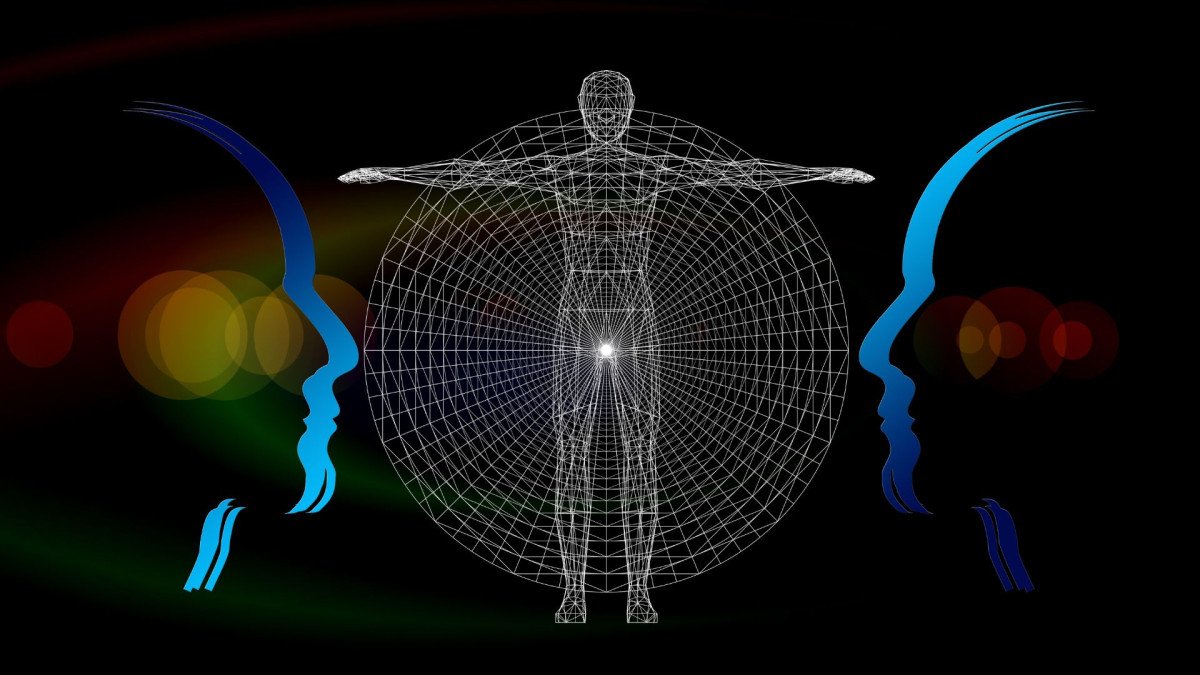
So, is History a myth?
This is supported by the parallelism between phylogenesis and ontogenesis, accepted although little debated. Haeckel’s theory of recapitulation (5), which Darwin integrated into his own theory of evolution, provides Freud with a pillar that supports a considerable part of his own constructions. Freud, in turn, gives Darwin unequivocal testimony of his admiration, calling him “the great Darwin”(6). Freud relies on his elaborations on the idea that psychogenesis recapitulates culturogenesis
History, therefore, is not a myth. But is there a clear and definitive opposition between the two? Freud aims, with the help of the scientific literature on which he relies, to reconstruct the historical stages of the development of humanity as they really occurred, and when this is not possible, due to lack of tangible elements on which to rely, he makes up for it. reconstructing a probable, or plausible stage, namely, in Totem and Taboo, the ritual murder of the father and his devouring by the children during the totemic-democratic banquet.
The myth, therefore, is born where history ends, it is a beyond of history. In the same way, in the individual subject of your clinic, it is the forgotten pathogenic memories that need to be returned to consciousness according to modalities that go from memory to elaboration(7), and to construction as will be said later(8).
But where does the thin line lie between the historical and the mythical and what motivates the jump from one to the other? If we return to the categories adopted by Freud himself in Totem and Taboo on the succession of the ages of humanity: totemic, religious and scientific, history must have emerged at some point in the transition from the religious to the scientific. It is a well-established fact that, in human history, myth precedes history.
By this we mean that the type of discourse about the past of human events that we know today as History has a traceable date of appearance, before which myth is supposed to have reigned as the undisputed master. We also know, or suspect, that History has come to compete with myth, to discredit it, to ridicule it. Let’s see what Thucydides says about it, at the end of the 5th century, who seemed to be clearly aware of the leap that his historical act represented:
“On the one hand, regarding the acts that took place during the war, I did not believe that I had to rely on the information of the first arrival to tell them, nor on my personal opinion: either I witnessed them myself (autopsy) , or I have investigated each one with all the accuracy possible in each case. On the other hand, the investigation had difficulties, since the witnesses of each event presented versions of them that varied according to their sympathy for one side or the other, and according to their memories. Perhaps the absence of the fabulous element (mythodes) in the events reported will diminish the charm of my work for an audience. However, if those who wish to examine the truth of the events that occurred and those that will be similar to them in the future, according to the human condition, consider them useful, this will be enough. In short, my work has been composed as a forever acquisition rather than as a competition piece intended for momentary listening(9).”
Conclusions
It seems difficult to draw a clearer line between myth and history on a collective level, but on an individual level and in the context of treatment? The subject does not remember everything. What he lacks, he has to rebuild. If the wolfman does not remember actually witnessing his parents’ coitus a tergo when he was 18 months old, according to Freud he must admit the historical reality of this episode as the cause of his later symptoms. Is this history or myth? Is it a real fact that could be verified by any witness if it were possible to rewind the thread of time and invite oneself to the party, or is it a mythical construction, a truth that only exists because Freud states it, because his patient believes it? And why does it have any virtue in bringing order to symptomatic chaos?
The archaeological paradigm of the past preserved as it is, but inaccessible to the present, is here in full operation. But why this inflexible insistence of Freud on the effective reality of the episode? Indeed, his theory could dispense with this reality and instead invoke a kind of “specific materiality of myth and fantasy,” according to JP Valabrega’s expression (10).
After all, from an epistemological point of view, It would not be the first time in the history of science that a theoretical construction was based on a premise with a particular status of reality, without worrying about the validity of this construction Physical science even made of it a kind of birth certificate with Galileo and his law of the fall of bodies, which supposes, for a body left to itself, a uniform rectilinear movement; a uniform rectilinear movement that no one in nature has ever been able to observe, but on whose existence everything that follows is nevertheless committed.
Regarding the act of birth, if we consider that of psychoanalysis, was it not an identical movement that Freud made when he renounced his theory of seduction, renouncing the materiality of the acts of sexual aggression and replacing it with the existence of a scenario phantasmatic that involves the subject? Speaking of the scientist – and therefore of himself – Freud mentions that his unwavering belief in the value of the processes of reason is a reconduction of the ancient dream of omniscience that was that of the totemic and religious eras (11). But are there one or several regimes of rationality in Freud and how are they ordered among themselves, what is their syntax?
In the limited space of this brief essay, we will not have had time to complete the program required by the title. We only wanted to give here an idea of the present state of our reflections on the matter. We have only scratched the surface of the question of the scientificity of psychoanalysis. We have not explored all the consequences of the distinction between myth and history in Freudian theory. However, some clues have emerged that it would be interesting to see where they could lead. The progress of this work has also made it possible to identify a series of new issues that would be worth developing with time and rigorous attention
